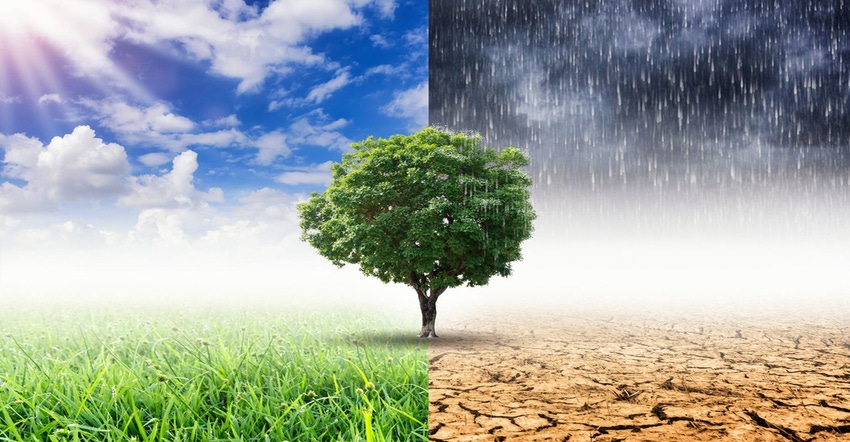
“Many farmers already use conservation practices that reduce greenhouse gas emissions and increase landscape resilience to climate impacts we can’t avoid,” shares Brent Bible, who farms 5,000 acres with his business partner in west central Indiana. “But adoption of many of those practices still lags behind what it could be, and farms’ financial challenges are one reason why.”
Bible brought his farmer perspective to the Senate Agriculture Committee on June 24 to discuss a nearly introduced bill, the Growing Climate Solutions Act, that has the potential to use the same conservation practices already implemented on many operations to provide a steady, diversified revenue stream to help smooth the ups and downs of the commodity markets.
Bible, who has an agricultural economics degree from Purdue University, said that discipline taught him to always employ data-driven decisions. “What we find more and more are the economic decisions and environmental decisions are complimentary.”
The Growing Climate Solutions Act, introduced by Sens. Mike Braun, R-Ind., Debbie Stabenow, D-Mich., Lindsey Graham, R-S.C., and Sheldon Whitehouse, D-R.I., would direct the USDA to create a program to provide transparency, legitimacy and informal endorsement of third-party verifiers and technical service providers that help private landowners generate carbon credits through a variety of agriculture- and forestry-related practices. Companion legislation was also introduced in the House by Reps. Abigail Spanberger, D-Va., and Don Bacon, R-Neb.
The Holy Grail of effective carbon markets has been quantifying and adequately compensating farmers for their actions. In the carbon offset markets for agriculture created to date, the cost and complexity of certifying credits has often outweighed the benefits of the credits themselves, preventing many farmers from participating in carbon markets.
With the right support, there's a growing consensus that producers can cut down on their emissions and benefit from the adoption of practices to store more carbon in soil and trees.
“This is good for the environment and good for a farmer's bottom line,” says Stabenow, a ranking member on the Senate Agriculture Committee. “Carbon markets offer agricultural producers an opportunity to create additional revenue streams. With all the uncertainty from COVID-19, trade and weather, farmers need new market opportunities now more than ever.”
Right now, farmers interested in participating in the private market for environmental credits lack good information on trusted sources for verification and technical assistance, both of which are crucial to farmers' participation.
The bill gives USDA a formal, non-regulatory role in voluntary carbon markets for the first time, sending a strong signal about the legitimacy of those markets and providing reassurance to family farmers and ranchers interested in participating.
Zippy Duvall, president of the American Farm Bureau Federation, says the hope is that USDA will be able to help landowners connect with private-sector parties that can assist in implementing the protocols and monetizing the climate value of the sustainable practices.
Third-party entities certified under the program will be able to claim the status of a “USDA Certified” technical assistance provider or verifier. The USDA certification lowers barriers to entry in the credit markets by reducing confusion and improving information for farmers looking to implement practices that capture carbon, reduce emissions, improve soil health and make operations more sustainable.
Incentivizing farmers
Indigo Agriculture, which helps farmers create new profitability opportunities, said the next logical step in realizing the potential created by the GCSA is to provide financial incentives to farmers, ranchers and foresters for greenhouse gas emissions reductions and drawdowns.
In written testimony to the committee, Indigo said Congress can support a new transferable tax credit for agriculture and forestry that creates a set dollars per ton of carbon dioxide equivalent (CO2e) sequestered (2021 and onward: $34.81-$50) modeled on Section 45Q, which could be attached to the GCSA.
Dr. Rattan Lal, this year’s World Food Prize laureate, said the “solution is for governments to fund farmers who provide ‘ecosystem services.’ At approximately $16 per acre per year, according to Lal's calculations, that would amount to about $64 billion globally. Although the price tag seems high, several countries have experimented with implementing it on a small scale.
“If we expect farmers to do good things for the planet, we should pay them for it,” Lal explains.
Although the pandemic has “roiled domestic markets and exposed weaknesses in the food supply chain and farm safety net,” it ultimately is a relatively short-term problem that will likely be resolved within the next several years.
Climate change, on the other hand, “is the single greatest long-term challenge facing family farmers and ranchers, rural communities and global food security,” National Farmers Union president Rob Larew testified. Rising average temperatures, shifting precipitation patterns, changing growing seasons, increasingly frequent and severe weather events and rising sea levels are already making it more difficult to grow crops and raise livestock — difficulties that will only intensify over time.
Larew said the end goal for farmers is always to leave their land in better condition from both a sustainable and economical standpoint, but farmers cannot continue farming if they're not profitable. The Growing Climate Solutions Act may provide that foundation needed for both.
About the Author(s)
You May Also Like






